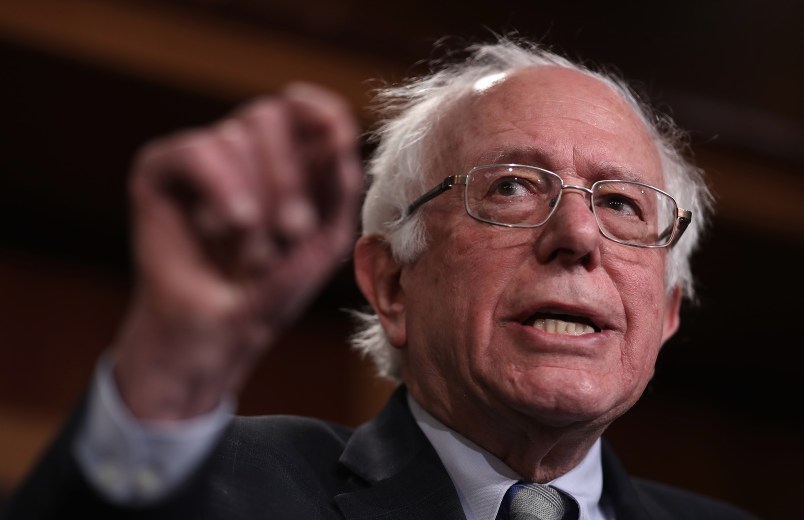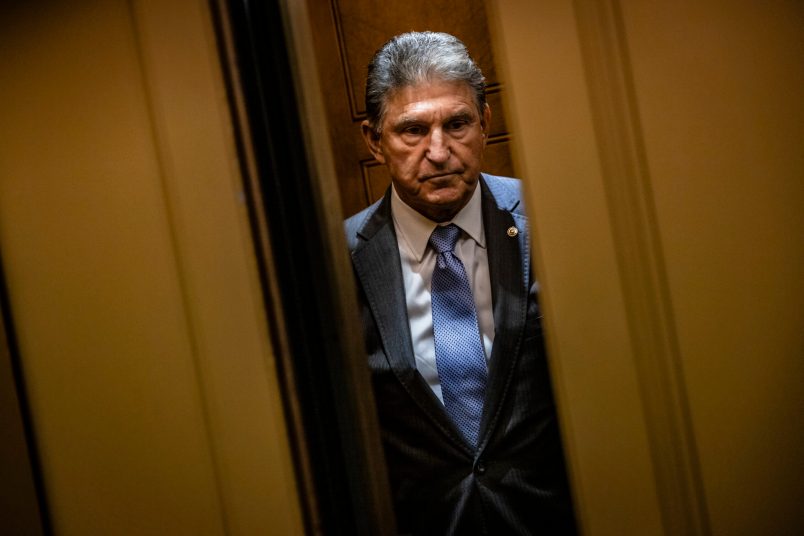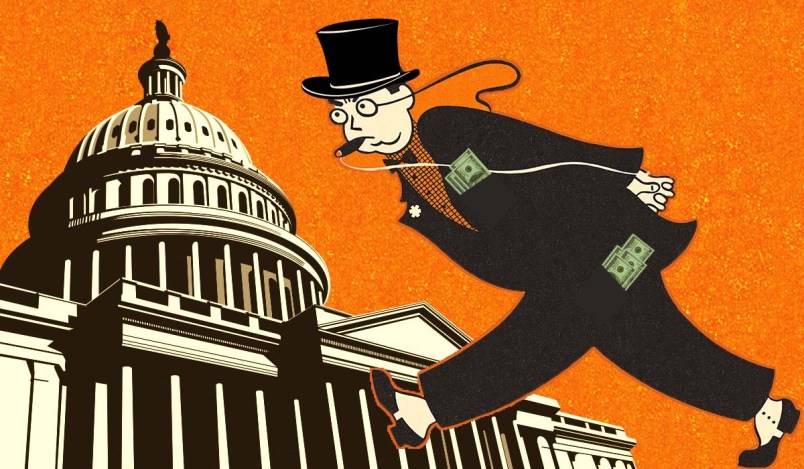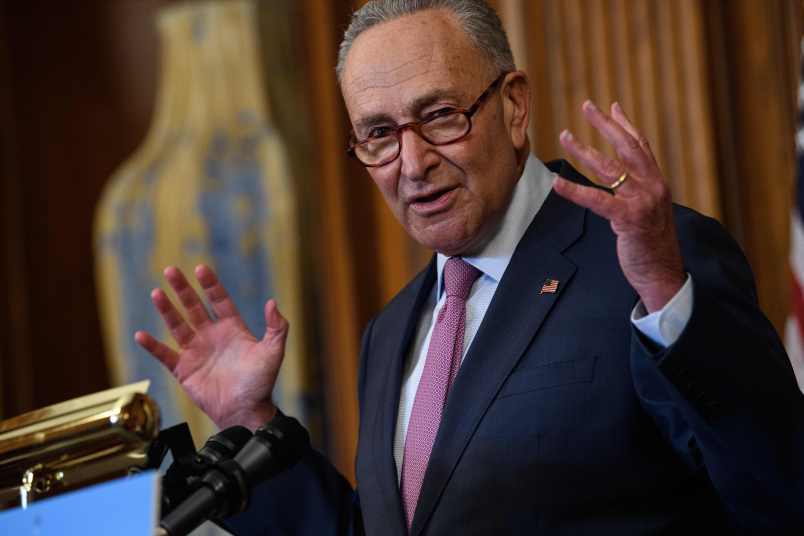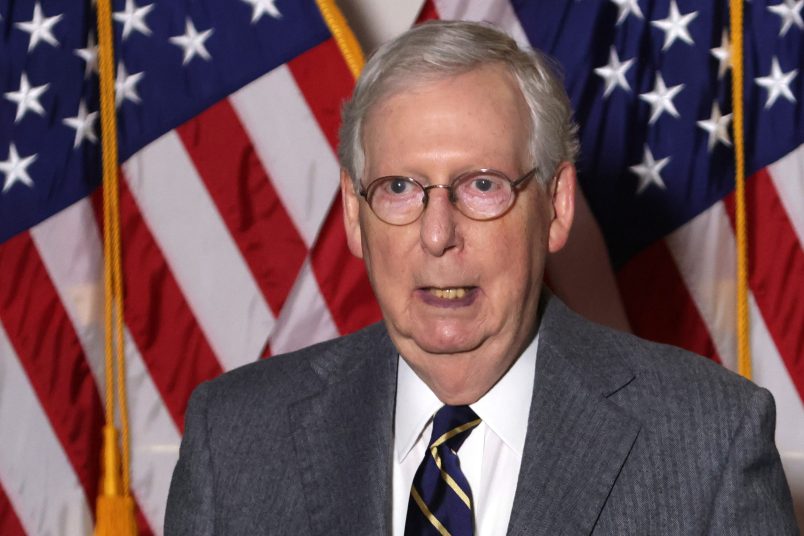Sen. Bernie Sanders (I-VT) announced he’ll run for president Tuesday morning. While he brings some huge advantages to his second stab at the White House that he didn’t have last time around, including a strong brand and the loyal following he built in the 2016 campaign, he faces some significant new challenges he didn’t have last time around
Here are three reasons why Sanders faces an even tougher path to the nomination than he did four years ago:
He Isn’t The Only True Progressive
In 2016, Sanders was the only candidate prodding the tiny 2020 Democratic presidential field to the left on fiscal issues. In doing so, Sanders was able to coalesce the progressive wing of the party and come within a few hundred delegates of winning the Democratic nomination.
This time, that’s going to be much harder.
Sanders has usually placed in second place in national polls, as well as in Iowa and New Hampshire surveys of Democratic voters, trailing only former Vice President Joe Biden. But Sanders’ support has been in the teens in most of these polls, after he fell just short of victory in the 2016 Iowa caucuses and won more than 60 percent of the vote in New Hampshire. Sens. Kamala Harris (D-CA) and Elizabeth Warren (D-CA) are pulling significant percentages in early polling as well, siphoning off some of Sanders’ former supporters.
Polls show Democrats support a lot of Sanders’ policy proposals, but many of his 2020 rivals have joined him as they look to compete with him for progressive voters.
A good chunk of the 2020 field has embraced some versions of Sanders’ calls for Medicare for all — Warren, Harris and Sens. Cory Booker (D-NJ) and Kirsten Gillibrand (D-NY) are all co-sponsors of Sanders’s Senate bill. Support for a national $15 minimum wage is close to party orthodoxy at this point. And Warren, Harris and Booker have all signed on to bills for universal free college tuition.
Sanders is not the only candidate proposing major new programs. Warren, arguably Sanders’ main rival at this point for populist left-wing voters, unveiled her plan for a universal childcare program paid for by a new tax on families earlier this week.
Social Issues Are Ascendant
While there’s plenty of populist economic fury left in the Democratic Party, social issues from immigration to gun control have come to the fore in the age of President Trump. That doesn’t play to the strengths of a man who has spent his career with a laser-like focus on economic inequality and has a less consistently progressive track record on many social issues.
Sanders struggled to win Hispanic and African American voters in 2016 and generally lost women — Hillary Clinton’s primary coalition and a strong majority of Democratic primary voters in 2020. He’ll have to make some major inroads with these groups if he stands a chance in 2020, and has yet to prove he has the skill set needed to do so.
Sanders in the past opposed some immigration reform measures favored by many in his party — including the 2007 efforts to craft comprehensive immigration reform, which he opposed over concerns that new temporary worker visas would drive down wages for poorer workers (many in organized labor agreed with him).
Gun control is another issue on which Sanders hasn’t been consistent with the Democratic party. The senator voted five times against the 1993 Brady Bill that mandated background checks on gun purchases, and he backed a bill supported by the National Rifle Association that would have made it hard to sue gun manufacturers whose weapons were used in violent crimes.
Sanders has since shifted dramatically on both issues. He’s recently called for a ban on semi-automatic weapons, has backed more recent efforts at comprehensive immigration reform, and has been a vocal critic of President Trump’s immigration policies. But as Hillary Clinton did in 2016, 2020 Democrats will likely take aim at his past positions on these key issues.
Sanders has also faced criticism in recent years for minimizing racial issues in favor of economic ones. He recently faced some damaging articles about cases of sexual harassment in his 2016 campaign, and he faced criticism back then for a failure to hire enough women and minorities on his campaign. He also struggled for a time in 2016 with how to handle the Black Lives Matter movement.
Sanders does have history with the civil rights movement from his student days. He has also worked hard to adopt gun control and immigration reform as his own issues and emphasizes them more — he talked about all of them in his Tuesday morning campaign announcement. But he’s much less comfortable on these topics than he is with his longtime criticisms of millionaires and billionaires.
Hillary Clinton Isn’t Running
A good part of why Sanders was able to coalesce more liberal voters behind him in 2016 was because he was the strongest voice in the primary for progressive economic policy. But his opponent made a big difference.
Fairly or not, Hillary Clinton proved to be a deeply polarizing figure even among Democratic primary voters. And Sanders’ strength came not just because he did so well with younger and more liberal white voters — it’s because he cleaned up with blue-collar white voters across the Rust Belt and Appalachia. That helped fuel his wins in Indiana, Michigan, Oklahoma and West Virginia — not exactly bastions of liberalism.
This time around, candidates with appeal to downscale white Democratic voters including Biden, Sens. Sherrod Brown (D-OH) and Amy Klobuchar (D-MN) are running or thinking of running as well. And without Clinton as a foil, it will be much harder for Sanders to galvanize the same coalition.
And while Sanders easily won younger voters in the last primary, he faces a glut of much younger opponents this time including Booker, Harris, Gillibrand and former Housing and Urban Development Secretary Julian Castro, who will compete for young adults in a way Clinton never could.
These issues don’t mean Sanders can’t win the nomination. But he faces some significant challenges that weren’t there in 2016.


